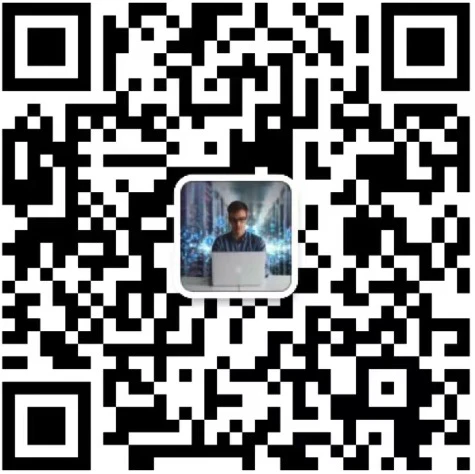What's New in DataGrip 2020.2
SQL editor
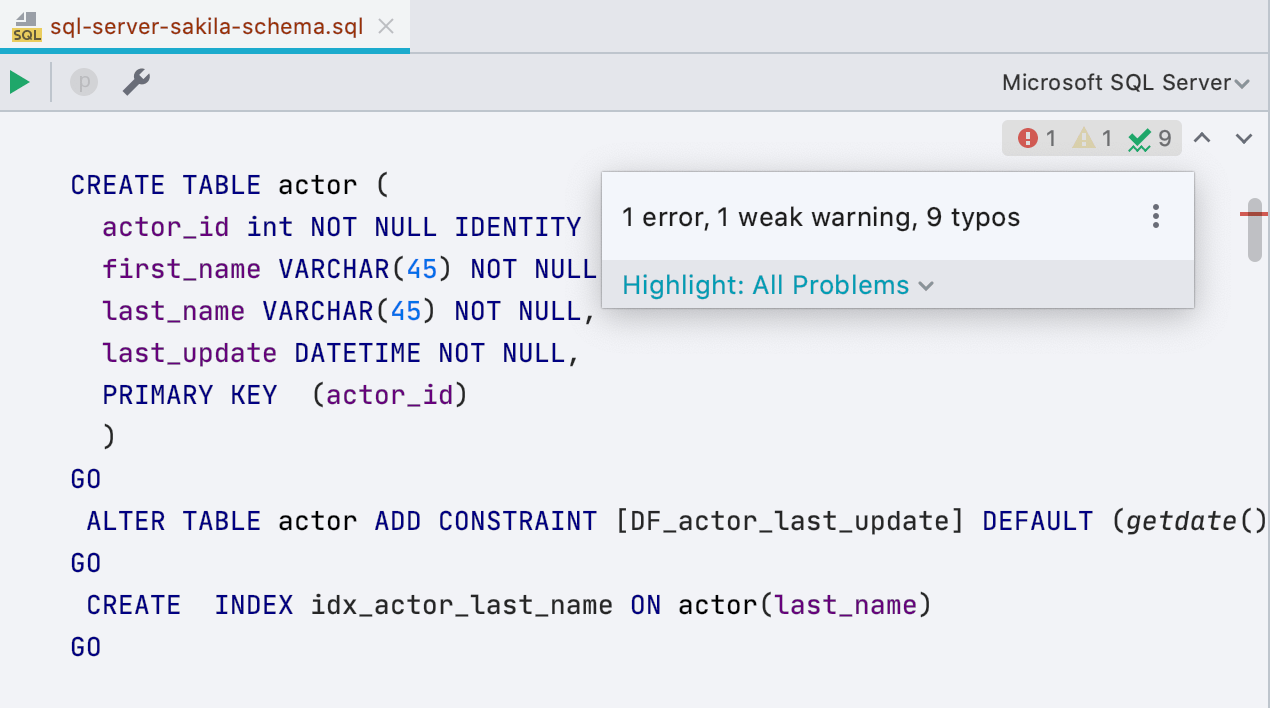 New inspections widget
The new inspections widget makes it easier for you to view all the problems in your
script and to navigate between them. It provides detailed information about the number
of warnings, errors, and other issues in the current file. You can use the arrow icons
to navigate through errors in the files, and of course it’s still possible to navigate
through errors using the F2 shortcut.
New inspections widget
The new inspections widget makes it easier for you to view all the problems in your
script and to navigate between them. It provides detailed information about the number
of warnings, errors, and other issues in the current file. You can use the arrow icons
to navigate through errors in the files, and of course it’s still possible to navigate
through errors using the F2 shortcut.
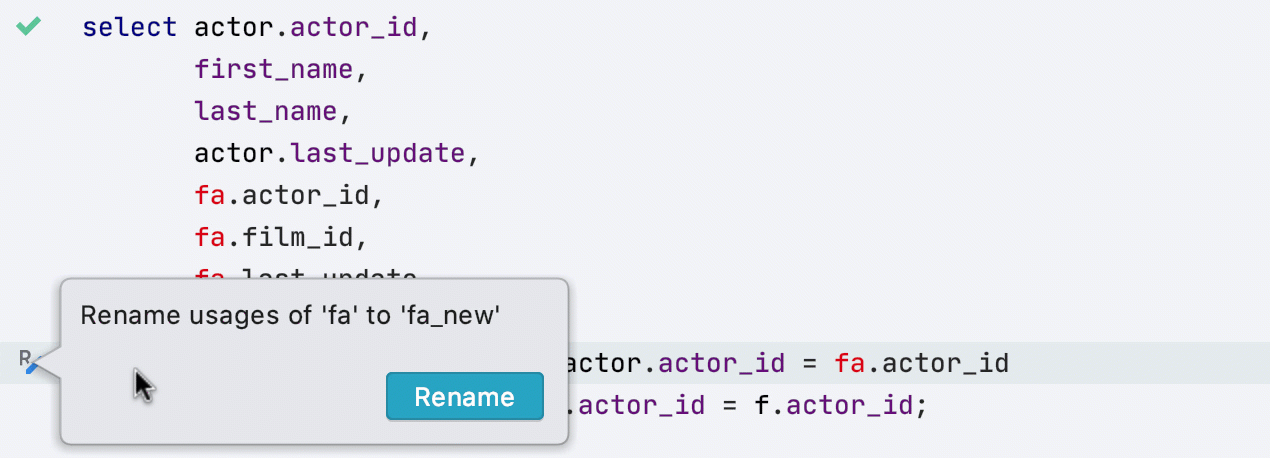 Suggested rename
If you change the name of an object in the code, this tiny button on the toolbar will
let you do a refactoring! For example, this is how it works for aliases:
Suggested rename
If you change the name of an object in the code, this tiny button on the toolbar will
let you do a refactoring! For example, this is how it works for aliases:
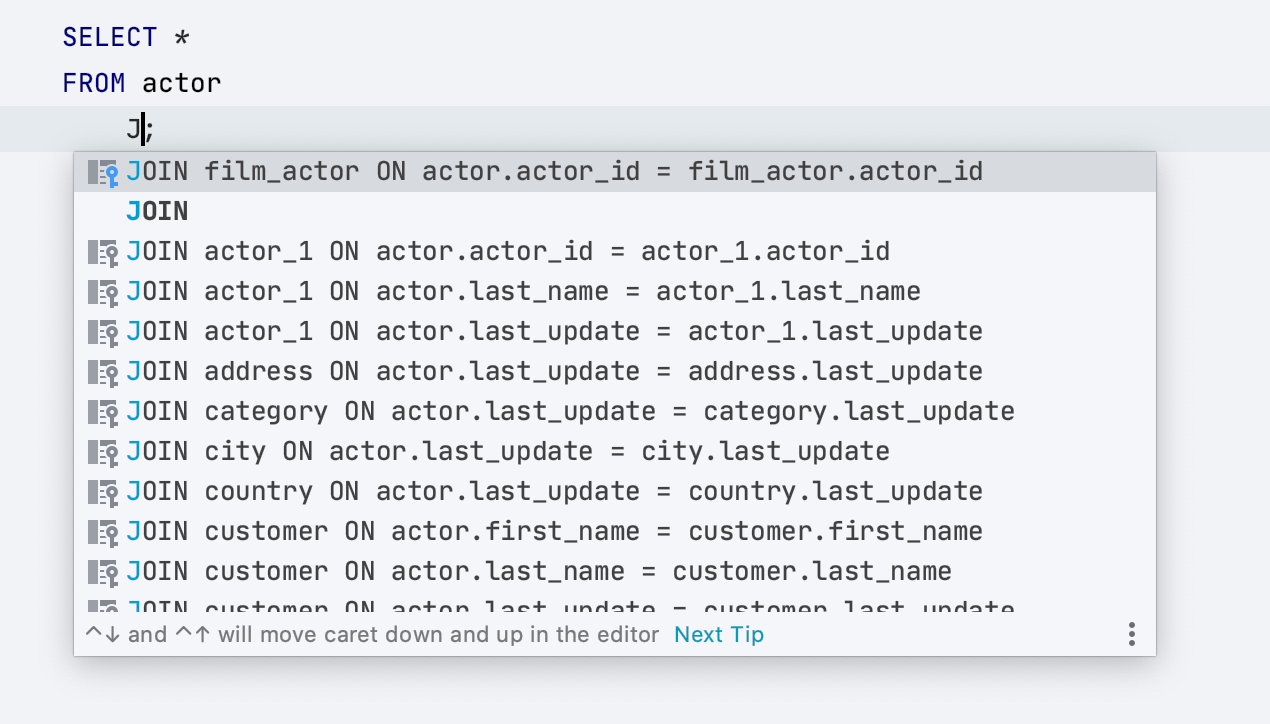 Even better JOIN completion
One less step to complete JOIN clauses: now we offer the whole clause when
you start typing ‘JOIN’:
Even better JOIN completion
One less step to complete JOIN clauses: now we offer the whole clause when
you start typing ‘JOIN’:
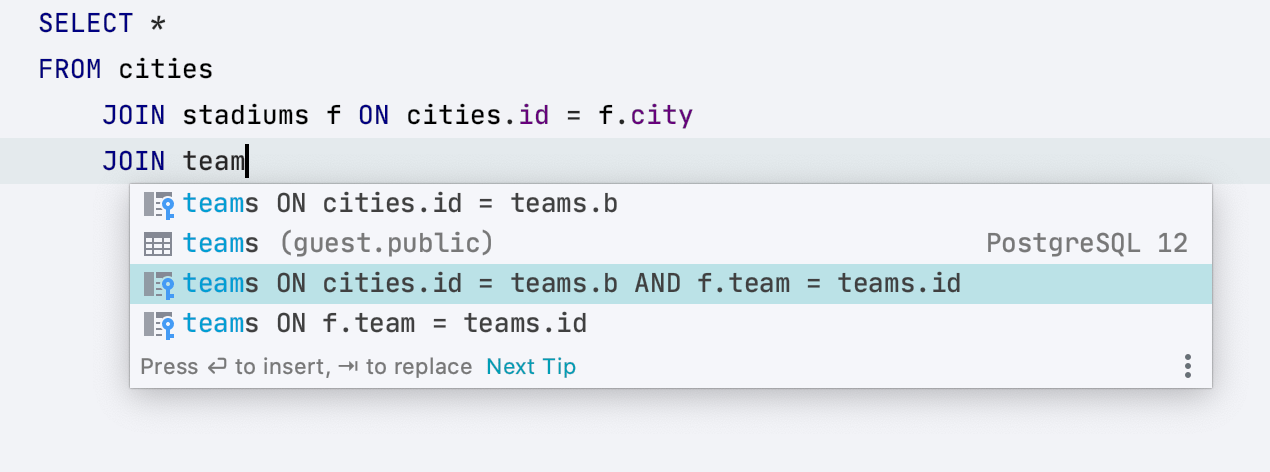 Also, completion offers a way to join by two columns, if applicable:
Also, completion offers a way to join by two columns, if applicable:
 Refresh database quick-fix
Sometimes you have unresolved objects in your script. When you do, DataGrip doesn’t
understand where these objects are located and suspects that they don’t exist at all.
While in many cases this is true, sometimes the objects are unresolved because you just
need to tweak the context you are working on.
We’ve added the Refresh database quick-fix, which will help you if an object has
been added to the database from somewhere else since the last time you refreshed your
database.
Refresh database quick-fix
Sometimes you have unresolved objects in your script. When you do, DataGrip doesn’t
understand where these objects are located and suspects that they don’t exist at all.
While in many cases this is true, sometimes the objects are unresolved because you just
need to tweak the context you are working on.
We’ve added the Refresh database quick-fix, which will help you if an object has
been added to the database from somewhere else since the last time you refreshed your
database.
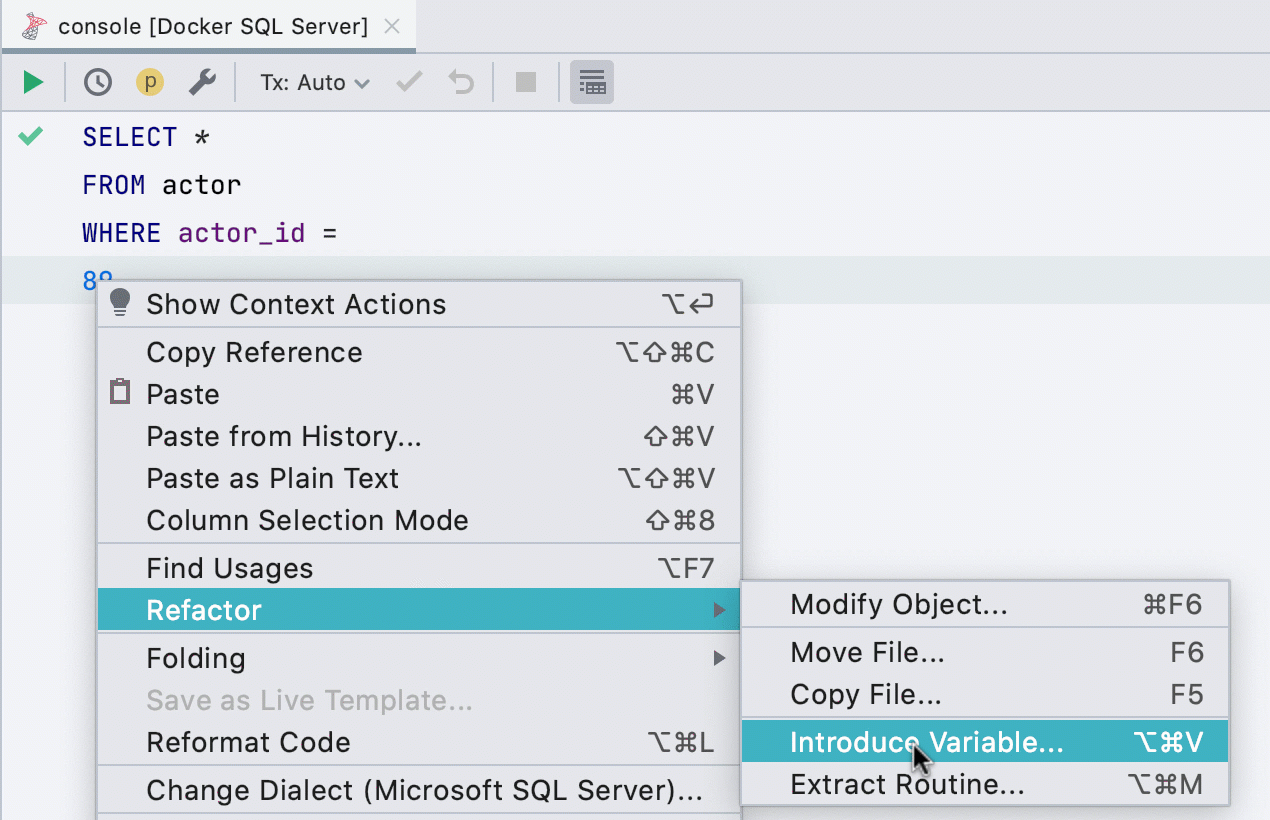 Introduce variable
This refactoring is now supported in more dialects: SQL Server, Db2, Exasol,
HSQL, Redshift, and Sybase. You can introduce variables from any
expression that has a simple type.
Introduce variable
This refactoring is now supported in more dialects: SQL Server, Db2, Exasol,
HSQL, Redshift, and Sybase. You can introduce variables from any
expression that has a simple type.
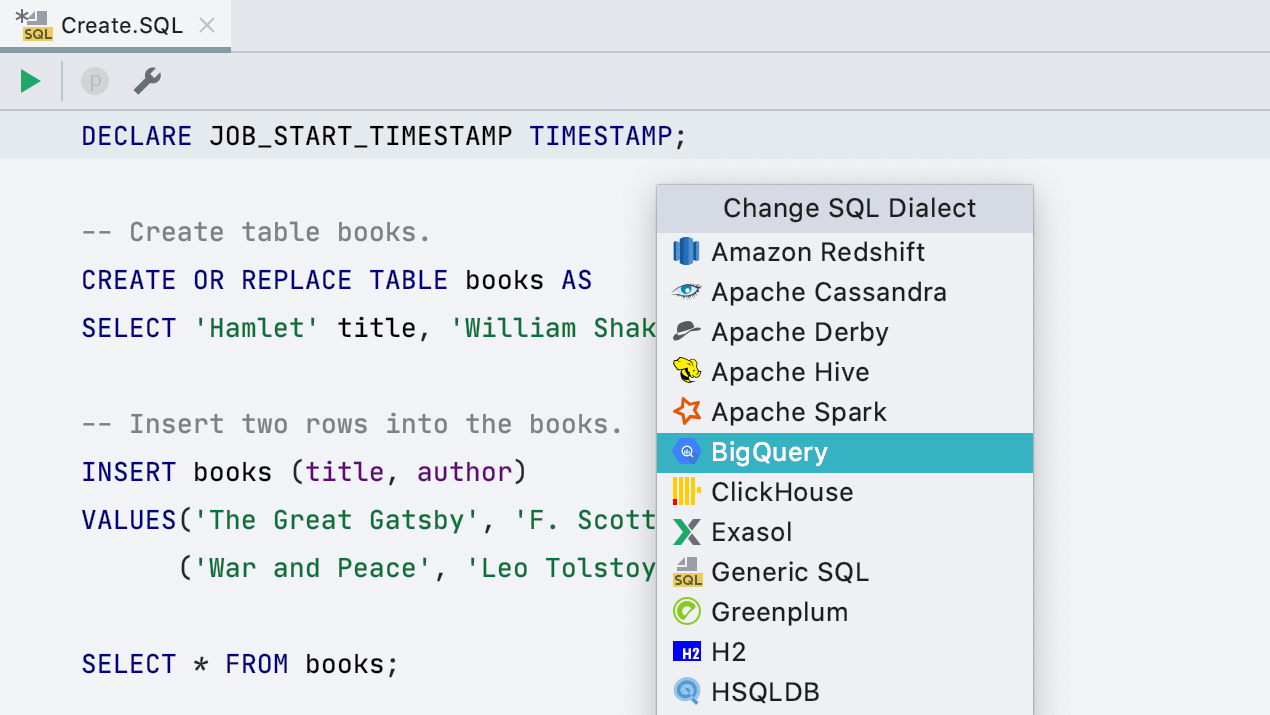 Google BigQuery dialect
We’ve added a new SQL dialect: Google BigQuery. Full support for BigQuery
is not here yet, but all things must begin somewhere. So far, DataGrip can correctly
highlight and provide coding assistance for your queries if you use Google
BigQuery.
Google BigQuery dialect
We’ve added a new SQL dialect: Google BigQuery. Full support for BigQuery
is not here yet, but all things must begin somewhere. So far, DataGrip can correctly
highlight and provide coding assistance for your queries if you use Google
BigQuery.
 TextMate bundles
TextMate, a text editor for Mac, offers syntax highlighting bundles for many languages.
We can import and use them in DataGrip. Starting with this release, the IDE will provide
syntax highlighting for the file types registered with the bundle.
Now your Python, JavaScript, Shell, and many other types of files
will have syntax highlighting by default. To see all the applicable file types, go to
.
TextMate bundles
TextMate, a text editor for Mac, offers syntax highlighting bundles for many languages.
We can import and use them in DataGrip. Starting with this release, the IDE will provide
syntax highlighting for the file types registered with the bundle.
Now your Python, JavaScript, Shell, and many other types of files
will have syntax highlighting by default. To see all the applicable file types, go to
.
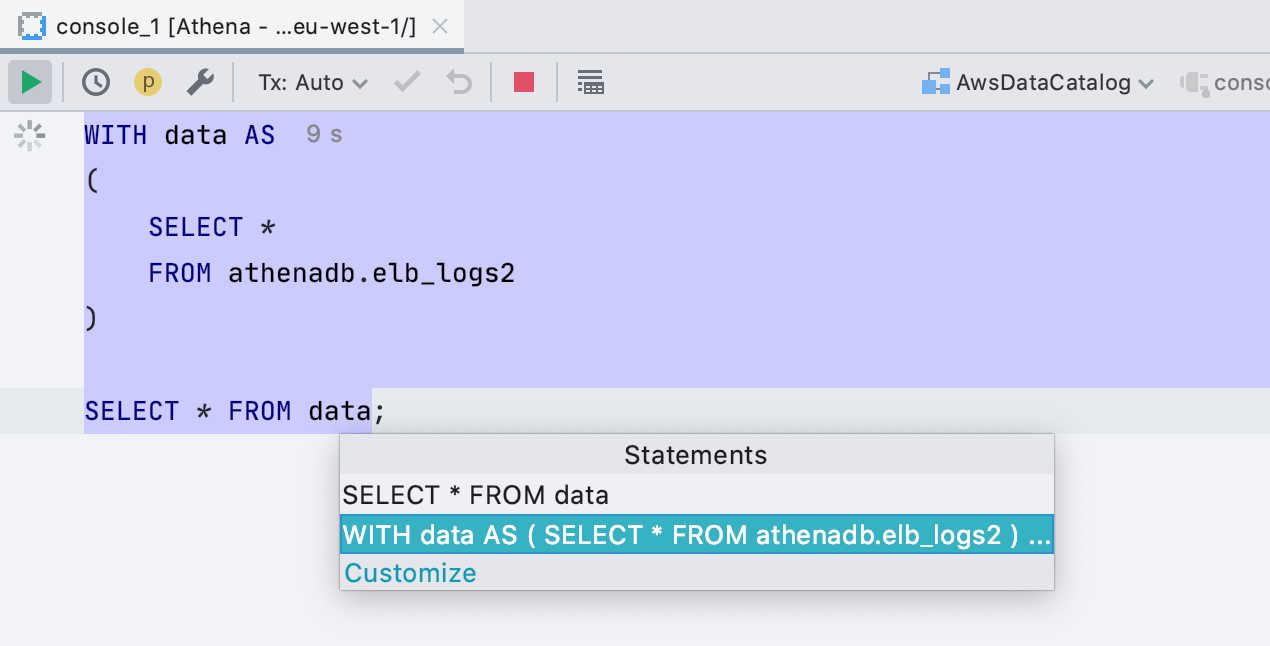 SQL 2016 for Generic dialect
Now files and consoles that are highlighted with the Generic dialect are
highlighted with SQL 2016. Previously, SQL 92 was used. The main
improvement from this change is the ability to run common table expressions without
selecting any code.
SQL 2016 for Generic dialect
Now files and consoles that are highlighted with the Generic dialect are
highlighted with SQL 2016. Previously, SQL 92 was used. The main
improvement from this change is the ability to run common table expressions without
selecting any code.
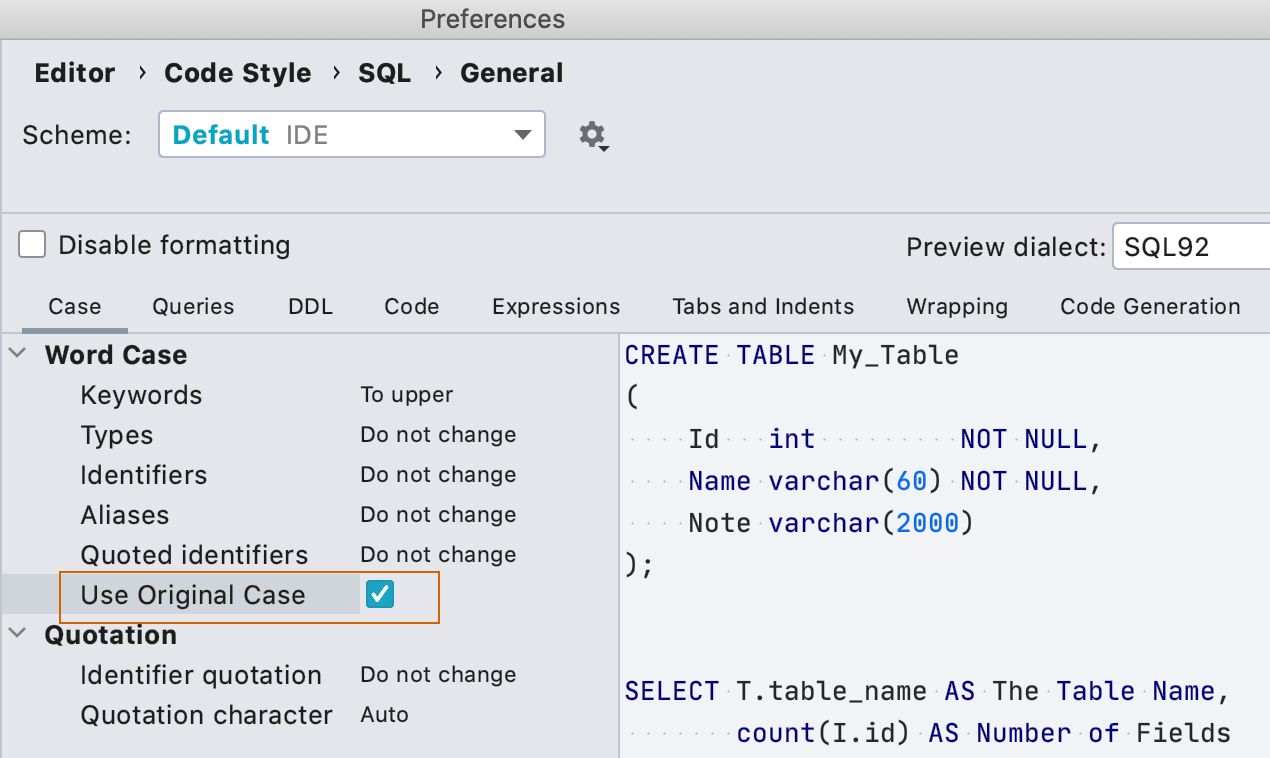 Original casing of objects for SQL formatter
Previously, the SQL formatter had three options for modifying object names in your code:
to upper case, to lower case or don't change. But it turned out
that this was not enough – some people need the object names to be changed according to
the casing which was used in the declaration. Now we provide that option.
Original casing of objects for SQL formatter
Previously, the SQL formatter had three options for modifying object names in your code:
to upper case, to lower case or don't change. But it turned out
that this was not enough – some people need the object names to be changed according to
the casing which was used in the declaration. Now we provide that option.
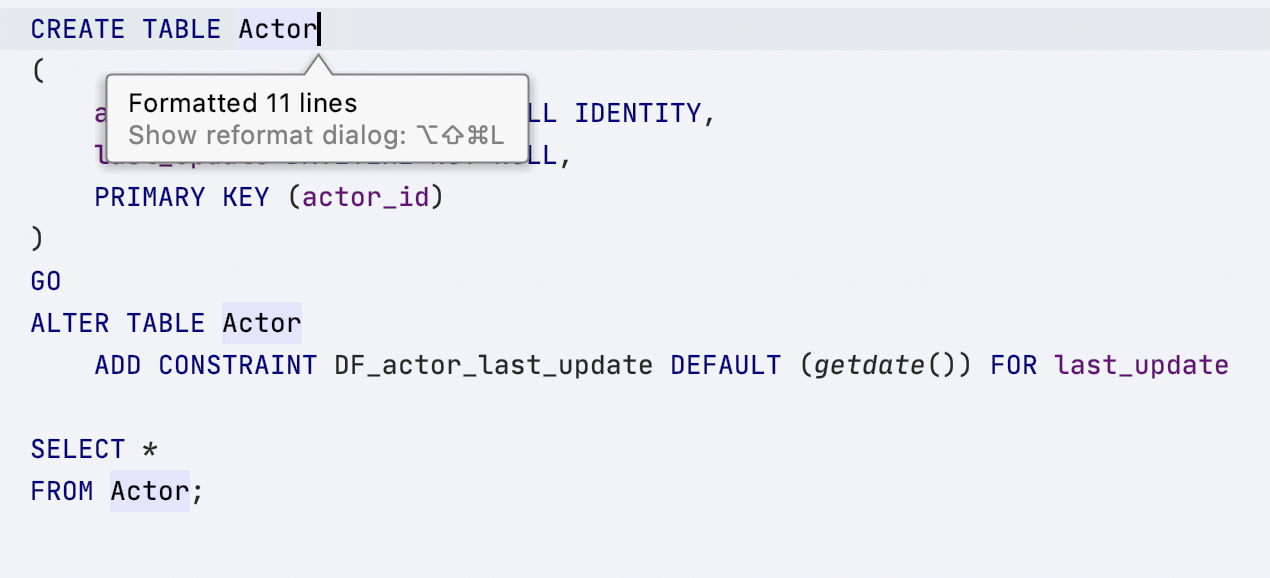 This is how it works: the table Actor was declared with the first letter capitalized and
the formatter leaves it unchanged.
A tip: if the declaration is in another sql file, create a DDL data source based on your
sql file so that the formatter will use the correct casing.
This is how it works: the table Actor was declared with the first letter capitalized and
the formatter leaves it unchanged.
A tip: if the declaration is in another sql file, create a DDL data source based on your
sql file so that the formatter will use the correct casing.
 Multiple carets for each line of the selection
This new action is another handy way to place multiple carets! Just select the code and
invoke multiple carets via or the dedicated shortcut:
Shift+Alt+G
Multiple carets for each line of the selection
This new action is another handy way to place multiple carets! Just select the code and
invoke multiple carets via or the dedicated shortcut:
Shift+Alt+G
